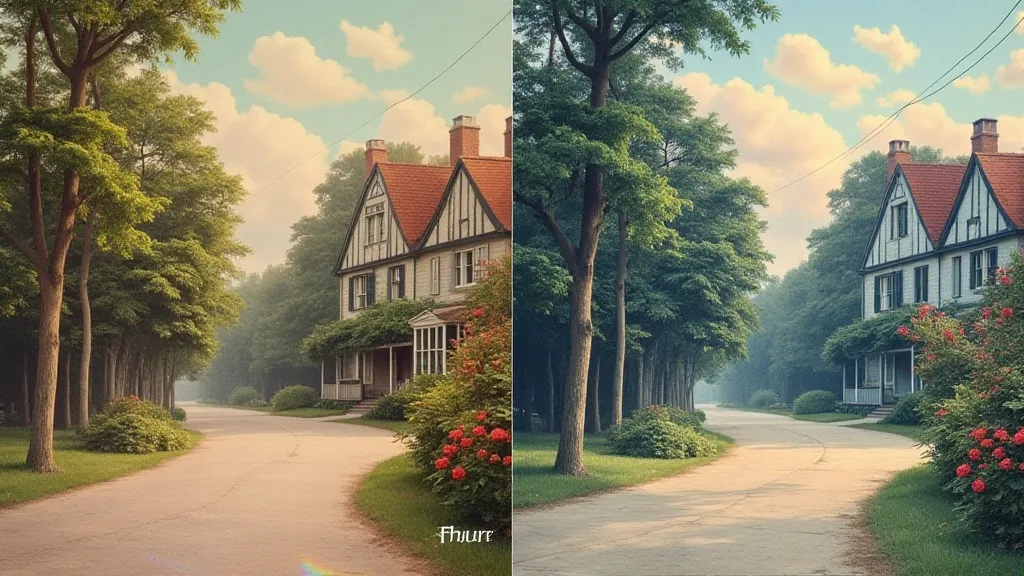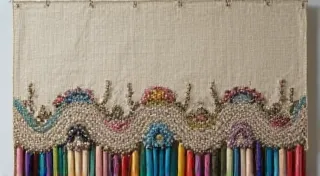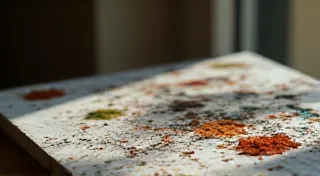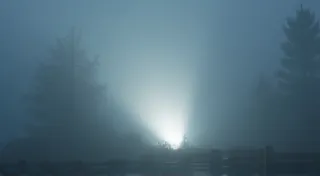The Fragility of Hue: Safeguarding Colorized Postcards from Digital Degradation
There's a peculiar intimacy that comes with handling an antique postcard. The thin, slightly yellowed cardstock, the faint scent of age, the ghost of a handwritten message on the reverse – they whisper stories of lives lived, journeys taken, and moments captured long ago. I find myself drawn especially to those in stark black and white, imagining the vibrancy that once existed within their monochrome scenes. It's a passion born from my work as a digital colorization artist, a process that feels less like manipulation and more like a careful act of historical resurrection. But that resurrection faces a subtle, often overlooked threat: digital degradation.
My journey into postcard colorization began quite by accident. I was a fledgling digital painter, obsessed with historical photography, and frustrated by the limitations of purely black and white imagery. My grandfather, a passionate collector of vintage postcards, noticed my interest. He’s a man of quiet precision, a retired clockmaker whose hands possessed an innate understanding of intricate mechanisms and enduring beauty. He showed me his collection, a treasure trove of glimpses into forgotten eras – bustling city streets, idyllic countryside vistas, portraits of people whose faces seem to gaze directly into your soul. He didn't want me to simply 'fix' them, but to breathe life back into them, respecting the history and the original intent of the image.

The Allure of Black and White and the Responsibility of Color
The inherent beauty of black and white photography lies in its abstraction. It strips away the distractions of color, forcing us to focus on form, texture, and light. But it also leaves us with a void, a sense of what *could* have been. Colorization aims to fill that void, not to replace the original black and white, but to offer a glimpse of the scene as it might have appeared. It's a delicate balance. Incorrect color choices can be jarring, even offensive, shattering the illusion and destroying the emotional impact. A wrongly placed shade of green can turn a charming street scene into something alien and unsettling.
That’s where the craftsmanship comes in. Much like my grandfather's meticulous work on clocks, colorization requires a deep understanding of color theory, historical accuracy, and a keen eye for detail. It's not just about adding color; it's about understanding the light, the shadows, and the context of the image. What were the common dyes and pigments used during that era? What colors would have been prevalent in the clothing, the buildings, the landscape? This isn't about artistic license; it’s about respectful interpretation.
The Enemy Within: Digital Degradation
But even the most carefully colorized postcard is vulnerable. The initial creation process is often painstaking, involving countless hours of digital painting and refinement. We strive for the highest possible resolution, utilizing complex layering techniques and sophisticated color correction tools. Yet, the journey from creation to preservation isn't always smooth. Each time a digitally colorized image is saved, shared, or viewed, it undergoes a series of digital processes that can subtly degrade the color information. This isn't a sudden collapse; it's a slow, insidious erosion of the hues that we're trying so hard to preserve.
The culprit is often the image format itself. JPEGs, while ubiquitous, are known to use lossy compression, meaning that some image data is discarded to reduce file size. Each save cycle introduces further loss. PNGs offer lossless compression, but even they aren't immune to problems. Metadata can be corrupted, color profiles can be misinterpreted, and the image can be resampled, each step subtly altering the color information. The “rainbow effect,” a tell-tale sign of repeated JPEG saves, is a particularly distressing example – a bizarre and unnatural halo that corrupts the colors and destroys the image's integrity.

Strategies for Preservation: A Practical Guide
So, how can we safeguard these digitally resurrected postcards from this silent degradation? Here are a few practical strategies:
- Choose the Right File Format: TIFF is generally considered the gold standard for archival purposes. It’s a lossless format that preserves all image data. PNG is a reasonable alternative for online sharing, but be mindful of its limitations.
- Avoid Repeated Saving: Each save cycle introduces further loss. Work on a single master file and only export copies when necessary.
- Preserve Color Profiles: Embedded color profiles (like sRGB or Adobe RGB) ensure that the image is displayed accurately across different devices. Make sure these are preserved during export.
- Master Copies: Create and store a high-resolution, lossless master copy of each colorized postcard. This serves as the original from which all other versions are derived. Back up this master copy in multiple locations, both physical and digital.
- Monitor for Degradation: Regularly compare your colorized postcards to the original master copy to identify any signs of degradation. Early detection can allow you to take corrective action before the damage becomes irreversible.
- Understand Software Settings: Different software packages handle color management and compression differently. Familiarize yourself with the settings in your editing software to optimize for quality and preservation.
Beyond the Pixel: A Legacy of Color
The fragility of digitally colorized postcards serves as a poignant reminder of the ephemerality of all things, both physical and digital. My grandfather, surrounded by his collection of antique clocks, often spoke of the importance of maintaining them, not just to keep them ticking, but to preserve a connection to the past. Colorization, in its own way, is a similar act of preservation – a way to breathe new life into forgotten images and to share them with future generations. The challenge lies not just in the technical skill of the colorization process, but in the responsible stewardship of these digital artifacts, ensuring that their vibrancy endures.

By embracing these preservation techniques, we can help ensure that these digitally resurrected postcards continue to captivate and inspire, carrying a fragment of the past into the future, vibrant and full of color.





